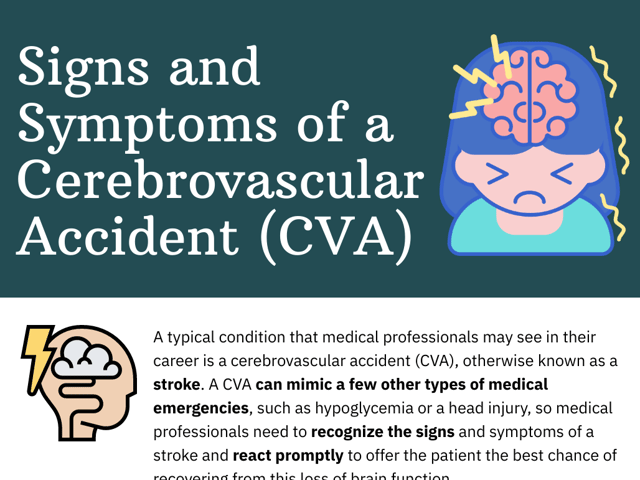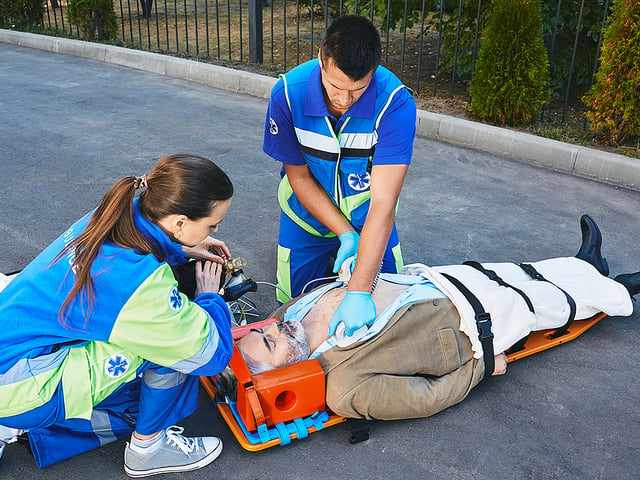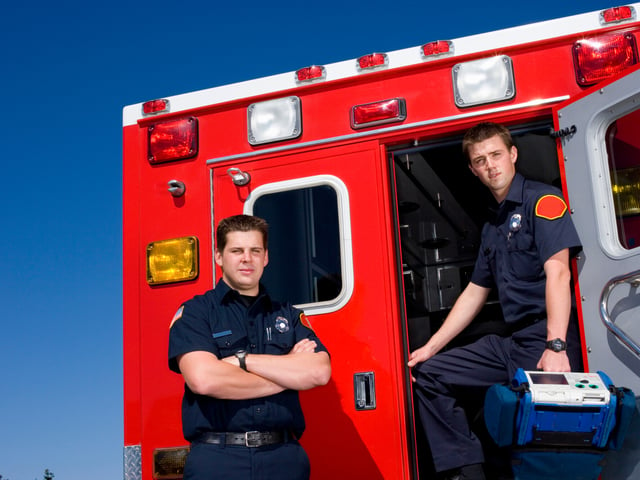
Signs and Symptoms of a Cerebrovascular Accident (CVA)
A typical call that EMTs will respond to in their career is a cerebrovascular accident (CVA), otherwise known as a stroke. A CVA can mimic a few other types of medical emergencies, such as hypoglycemia or a head injury, so EMTs need to recognize the signs and symptoms of a stroke and react promptly to offer the patient the best chance of recovering from this loss of brain function.
Signs and Symptoms
There are many signs and symptoms of a stroke. Since the body is affected on the opposite side of where the stroke occurs in the brain, having one-sided facial drooping or weakness on one side of the body is common. The most frequently observed indicators in an emergency setting are the following:
-
Facial drooping, typically on one side of the face
-
Vision loss in one eye, or blurred or double vision
-
Weakness or numbness on one side of the body
-
Lack of movement or sensation on one side of the body
-
Loss of balance
-
Slurred speech or absence of speech
-
Altered level of consciousness
The FAST Mnemonic
While there are several stroke assessment tools EMTs are trained to use, a quick and popular one for assessing a patient with a stroke is the mnemonic FAST. If a patient presents with even one of these signs, it is time for appropriate treatment and rapid transport to the hospital.
F—Facial droop: Ask the patient to smile and assess for facial drooping on one side.
A—Arm weakness: Ask the patient to close their eyes and hold both arms straight out in front of them, observing for one-sided weakness where the arm will drift down toward the ground.
S—Speech: Ask the patient to repeat a simple sentence and listen for slurred speech, difficulty speaking, or absence of speech.
T—Time: Document the time the patient was last seen without symptoms.
Advanced Medical Care
Even if the patient’s signs and symptoms improve or vanish entirely, the patient must receive advanced medical care. There is a small window of opportunity for a patient having a stroke to receive life-saving drugs, so the EMT must quickly recognize CVA signs and symptoms to offer the patient the best chance of survival.
To learn more about stroke and other cardiovascular events, or to test your existing knowledge, check out our study guides, practice tests, and flashcards.

Keep Reading

Emergency Medical Technician Test Blog
How Many Questions are on the NREMT?
The National Registry of Emergency Medical Technicians (NREMT) exam is …

Emergency Medical Technician Test Blog
How Hard is the EMT Test?
EMTs (Emergency Medical Technicians) are required to have strong medica…

Emergency Medical Technician Test Blog
What Is a Passing Score on the NREMT Exam?
The job outlook for EMTs and paramedics is strong. The Bureau of Labor …